The Article
Seismic Isolation Podiums From Townshend
23rd April 2021
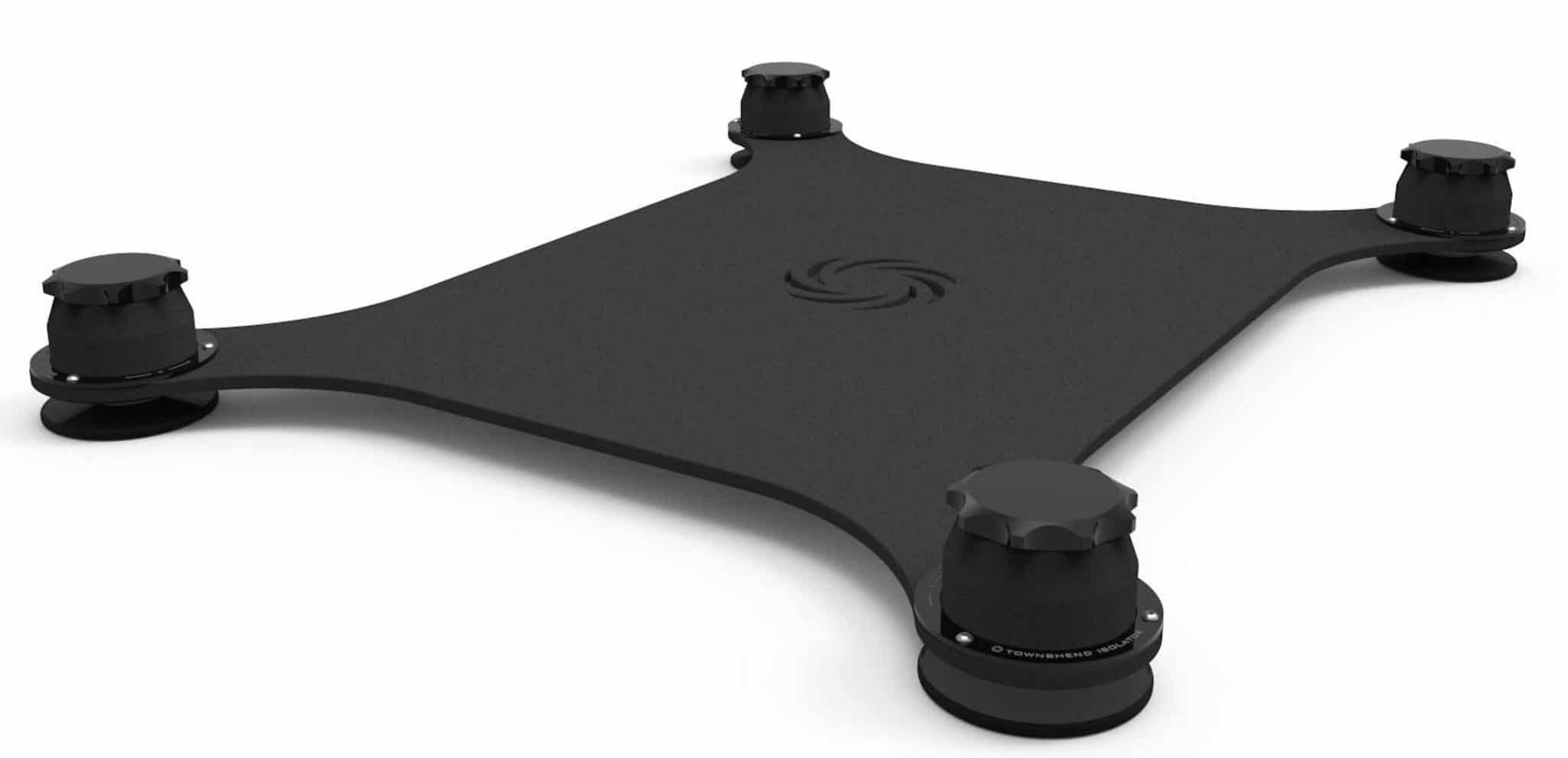
Designed to hold any size and weight of speaker, the Podiums provide isolation for your speakers. Paul Rigby looks to lower his noise floor
And when the company says “any” speaker can fit on the Seismic Podiums, that means a set of floorstanders or a subwoofer or, get this, a pair of standmounts plus the stand.
So why on earth would you put a stand on a stand? Hopefully Townshend will tell us during the review.
The basic idea of these products is to break the connection. The connection that sends and receives vibration to and from your speakers.
This is a concept I’m fully familiar with and, if you’re not, then you really need to be if you want to get the most from the hard-earned cash you’ve already spent on your system.
THE BELLS! THE BELLS!
When you’re hi-fi produces music, it’s not only music that spills from your speakers. There’s other stuff in and around it. Other stuff that attaches itself to the music. It’s part of the music but it’s not welcome at all. It’s parasitic to the music and is actually quite harmful in some ways. Harmful to your enjoyment.
The stuff I’m talking about goes by fancy acronyms like EMI, RFI and the like. Vibration comes under the same banner.
This sonic detritus, this rubbish is uninvited and unwelcome. Sent to do nothing but irritate us, like floating leaves in your cup of tea.
And where does it comes from? From within your hi-fi, your mains supply, your room, in and outside of your house, your mobile phone, Wi-Fi…Oh the list goes on.
These distortive elements surround us all of the time. They’re a standard part of our day-to-day life and they cause us no harm or bother. They only directly affect us when we do things like listening to music on our hi-fi.
These forces are not good for sound. They get in the way of music. They veil and muffle it. I don’t mean like placing your hand over the speakers. Not that kind of veiling. I’m talking about veiling fine detail, especially. The delicate reverb tail from a cymbal hit that might not run as far as it should or the plucking of an acoustic string that may not sound as solidly steel like when pulled. Tiny things, really. But you add up the hundreds…well, thousands of these ‘tiny things’ and you lose something from the sound. A sense of accuracy. A sense of soul. You end up with a very lively recognisable noise, sure but you lose the essence of realism.
Now to many, this stuff really doesn’t matter. Most music fans don’t care about it. They can even get a bit impatient if you bring up the subject over a pint of beer, for example. It’s a lot of fuss over nothing, “Just sit down and enjoy your music and get on with it, man!” That kind of thing.
But there are some us. Poor, misguided fools that we are. Who come over all fixated about our music. We actually want to hear more. We went to hear more detail. More realism. More…everything. I’m certainly like that. I constantly search for ways to improve the sound quality from my hi-fi. I tweak here and, you might be surprised to learn, I tweak there.
It’s a never-ending thing. It will baffle some, I know but I want to get as close to the music, as close to the musicians who played that music, as possible. I want to vicariously ‘be there’. When the music was being created.
So, I spend a lot of time trying to improve sonic realism by getting rid of of the stuff that gets in the way. Things like high-frequency noise, vibration and the like because, when that happens, the music sounds more…real. And that’s a good thing. For me, at any rate.
Because there’s a host of these odd forces around and about, that also means there is no one silver bullet to get rid of all of this horrible stuff. Each area of your hi-fi needs individual attention. Your speakers are no exception to this.
Townshend’s Seismic Isolation Podiums are but one tool, produced to tackle jut one part of the problem. The problem surrounding speakers.
THE HARDWARE
To reduce the Seismic Podiums to their most basic forms, they are spring-loaded, adjustable platforms that cut out vibration to and from your speakers and they are available in five standard sizes (or to special order, if required)
And because every technology company loves a brand name, Townshend says that these products include ’Captive’ Load Cell technology to provide a stable four-square footprint.
The platforms offer fine levelling adjustment via a rotatable top cap while, on the bottom, is an adjustable foot to compensate for out-of true floors. The platform itself is made from black steel and can handle speakers with or without spikes. The Seismic Podiums themselves are suitable for wood, tile or carpeted floors.
When in use, the total speaker height – that is, your speaker on top of the Podium, is increased by 20mm, which I didn’t find to be an issue during the review. Yes the tweeter was lifted a tad but, to be honest, at least in my case, I actually found that the tweeters now held a more accurate position, in terms of height, from the chair I was positioned in.
There are six different weight capacities available from less than 5kg up to 200kg including the weight of the Podium base plate. For loads over 200kg, custom designed Podiums that include six or more Load Cells are available. Virtually any weight of equipment can be isolated.
Townshend offers further textual explanation but also a very nice YouTube video within which it performs a range of seismic tests with visible, real-time test results. I recommend you check that out.
It was seeing similar tests at a couple of UK hi-fi shows that initially peaked my interest, enough to perform the review here.
I asked designer and company owner, Max Townshend, about the Seismic Podium designs. I wondered why he had invented the Seismic Podiums at all. Especially when there are so many speaker solutions on the market, “The traditional solution of spikes and cones, etc. for speaker suspension relies on the naive notion that rigid coupling and one-way energy transfer are achievable. They are not,” he added, other forcefully.
Then continued, “A little isolation helps a bit and is very popular with the abundance of the fancy polymer/Sorbothane isolators and high-mass configurations, that proliferate today. However, as we found 30 years ago, this form of partial isolation down to 10-15Hz, is no way good enough. To isolate the critical audio band properly, it is essential to go down to 2-3Hz. This is only achievable by a properly engineered, progressive air-damped, spring/mass, mechanical low pass filter. This we incorporate in all our current range of seismic isolation, because it works.”
SET UP
When the stands arrived for review, they were a touch out of alignment and needed tweaking. Which was fine because I needed to review this bit too.
During set up, I was asked by the simple, one-sheet instructions to place the Seismic Podiums in their final resting place (may they rest in peace). At this point, I made sure that they were level. Do this before the speaker gets anywhere near the Podium. It’s easier and less cumbersome and you’ll have more room to work.
I do have one minor criticism here. I would have liked to have seen a built-in bubble level on these stands or, just as good, a free bubble level accessory to help in this task but nothing was included. Make sure you grab one (as I did) before you set up the stands.
You need to rotate the metal discs that you find placed at the very bottom of the Podium feet to level up the structure.
Once level, carefully place your speaker onto the Podium itself and try to centre the cabinet on the stand.
You may be struck by a case of the wonkies at this point as the speaker tilts to one side. That is, one of the four Podium feet might ‘give’ a little too much and a bit too easy, causing unbalance in the shelf. Keep your bubble level handy for this bit too.
There’s a wheel on top of each Podium. Rotating this wheel anti-clockwise raises the Podium to level things off. And vice-versa if you twist clockwise. The instructions will provide information of how these adjustments can be performed efficiently.
One thing I did notice is that, at one point, when I turned the top-out wheel, the bottom disc, the one we altered initially to level the stand? That moved too. So Townshend gives you a spanner to sort that out. You places the spanner on a nut, positioned just above the lower disc. That keeps this disc in place and prevents it moving. Allowing you to rotate the topper most disc properly.
Again, the instructions do a good job in giving you fine tune directions. Once the Podiums are level, you should be able to give the speakers a little push and they will then bounce back in perfect balance and equilibrium. It’s actually a lovely thing to see.
SOUND QUALITY
I decided to use a pair of my reference Monitor Audio Silver 300 floor-standing speakers for this test and played an original pressing of Jethro Tull’s Living in the Past as the first source.
Why the Silver 300s? After all, they cost less than the Podiums! Because, my friends, siting the Podiums under a pair of £10k speaker designs is too easy. It’s no test at all. The results are almost a forgone conclusion. Doing so, weighs the potential review success too far towards the Podiums.
Of course the Podiums are going to sound great under such speakers. Of course they are.
Now, you try and get something ‘great’ from a pair of speakers costing less than the Podium designs, then you have a job on your hands. They may sound fine, decent even but wonderfully amazing? Well, I ain’t so sure. The Silver 300 speakers are excellent speakers but they should only be expected to go so far in sonic terms because they will top out, inherently and produce diminishing performance gains. That is, a standard isolation platform should be able to take the Monitor Audios so far but not any further.
So here, the Podiums have their work cut out.
If removing vibration is such a ‘big deal’. If removing vibration is such a ‘thing’. Then removing vibration from relatively low cost speakers should give me something extra, something over and above my normal sonic expectations for speakers in this price point. That is, I wanted to make sure the improvements were wholly Podium related. Not speaker design related.

I started listening with the speakers sitting on a woollen rug and then compared those to my reference isolation feet. These are a set of Blue Horizon Spike Shoes. You can pick up a set of four for around £80 so you’re looking at £160 for a pair of speakers. They include a metallic upper cover. Underneath is a piece of rubber/cork combo which does a tremendous job, for the price, in isolating the speaker.
So does the sound with the speakers laying flat on the carpet sound bad? No, of course not. This is a quality hi-fi chain and excellent speakers. The sound is very nice indeed. I’m sure you’d feel the same if you could hear it. And that’s what generally happens in and around your typical hi-fi. Most people will hear something like I’m hearing and they’ll think. “Sounds fine to me – what’s actually with that then?” Thing is, though, ‘fine’ is as good as they’re going to get. ‘Fine’ might be good enough for some users. It’s not for me. The sound could be better than ‘fine’ and I, for one, want more than that.
With the Spike Shoes in place, I heard a greater focus from all instruments and musicians across the soundstage. That was especially evident around the lead vocal which now separated itself from the instruments and isolated itself in the stereo image. Actually, that effect meant that the stereo image was stronger. Imagery was improved with added space in the soundstage.
Which was great. But what could the Podiums offer? Could they give any improvements to what I was already hearing? And if they did add sonic improvements, would those improvements justify the extra cash need to buy the Podiums in the first place? That is, are the Podiums worth the asking price?
The answer? Good gracious yes, they are. They transform the sound. An entire list of points sprang forth after hearing these stands for all of 30 seconds but the principle advantage was the imagery.
Earlier, the musicians and instruments were sprinkled somewhat randomly across the soundstage and, hearing them, you couldn’t really fix them anywhere in particular. The acoustic guitar was somewhere around the left channel and the piano was to the right…ish. The arrangement of the musicians was rather nebulous, less than precise you might say.
With the Seismic Podiums in place, not only were the musicians fixed in a new position but the band itself occupied an entire 3D space for the first time, instead of a rather flat space with only the lead singer roaming towards the rear at the stereo image position. Now, everyone had a sense of position and space.
Secondly, there was the reduction in noise. The noise floor fell so much that the cymbal hits, which could earlier be heard but were never really that impressive, now had a notable focus and tonal accuracy. The amount of space around cymbal hits was impressive, giving the cymbal response a new level of importance in the mix.
Drum hits were no longer simple strikes. They showed the drum’s size and the amount of power behind that initial strike. That is, the tonal realism from the percussion was higher now.
The clarity from this track also rose. For example, at the start of the track was a glockenspiel or an instrument that sounded very much like that. A few strikes from that offered pleasant tones before the Podiums were in place. Now, those tones were no longer. They had a definite beginning and ending. That is, the glockenspiel strikes were more precise. Each strike was separate, individual and spaced from the last.
The piano also offered a greater resonance. You got the feeling that the ivories were attached to a massive wooden box. There were definite after effects to each key press.
Finally, although the Spike Shoes largely removed a shouty brightness from the lead vocal, that effect never really left could still be sense during crescendos. With the Podiums in place that edgy nature was wholly removed, leaving more character and texture from the lead vocal and hence, more emotion.
I then changed to CD and Ryuichi Sakamoto and his Virgin America album from 1989, Beauty.
I played the folk-like track, Asadoya which features a host of secondary percussion, a bank of strings, a vocal chorus, tabla, Spanish guitar and a host of other instruments. It’s a busy presentation. Without a sense of transparency, the entire thing can sound confused. Not here.
What I appreciated about this track via the Seismic Podiums was the multi-layered presentation. Each layer was easily accessed via the ear too. I was never left with a foggy, confused lump of sound. So the lead vocal, backing chorus, three secondary percussion instruments, tabla, piano, bass and more were each placed in a neat position. Each could be heard without effort and each could be heard to fit correctly with the other instruments. Despite the busy nature of the soundstage, it never felt bloated. And it can sound just like that if any part of the hi-fi loses control.
CONCLUSION
If I could distill the Seismic Isolation Podium speaker stands down into one word, that word would be ‘organisation’. They not only bring order to the soundstage, they apply sense of understanding in terms of the instruments you hear. That is, each instrument makes more sense. When listening to a previously muddy piece of music, there is an element of “Oh, I see what they’re doing there now.” There’s a realisation. From an often confused mess, the Podiums bring an overall sense of clarity to any one track.
More than that, because you feel that you’re in good hands you find yourself relaxing and enjoying the music. There’s an expectation and excitement of what’s coming next instead of a fear that this or that frequency might be bright, sharp or one step away from sounding punch drunk.
More than any of this though, the Seismic Podiums allow your speakers to perform to the best of their ability. Grab yourself a pair of Podiums for your speakers and hear what those speakers – for better or for worse – are truly capable of doing. It’s my guess that yell be hearing them and I mean truly hearing them, for the very first time.
The most generous component in your hi-fi chain, Seismic Isolation Podiums spend their time making your speakers sound great.
TOWNSHEND SEISMIC ISOLATION PODIUM
Prices:
Size…
1 Podiums £1400 290mm x 220mm up to 200kg each Speaker
2 Podiums £1700 400mm x 300mm up to 200kg each Speaker
3 Podiums £2100 500mm x 380mm up to 200kg each Speaker
4 Podiums £2600 570mm x 430mm up to 200kg each Speaker
5 Podiums £3200 640mm x 480mm up to 200kg each Speaker
Custom builds available for all Speakers of any load POA
Tel: 0208 979 2155
GOOD: organised soundstage, low noise, midrange clarity, tonal realism, tweakbility, solid design
BAD: nothing
RATING: 9

REFERENCE
Monitor Audio Silver 300 Speakers
Tellurium Q cabling
Blue Horizon Professional Rack System
Harmonic Resolution Systems Noise Reduction Components

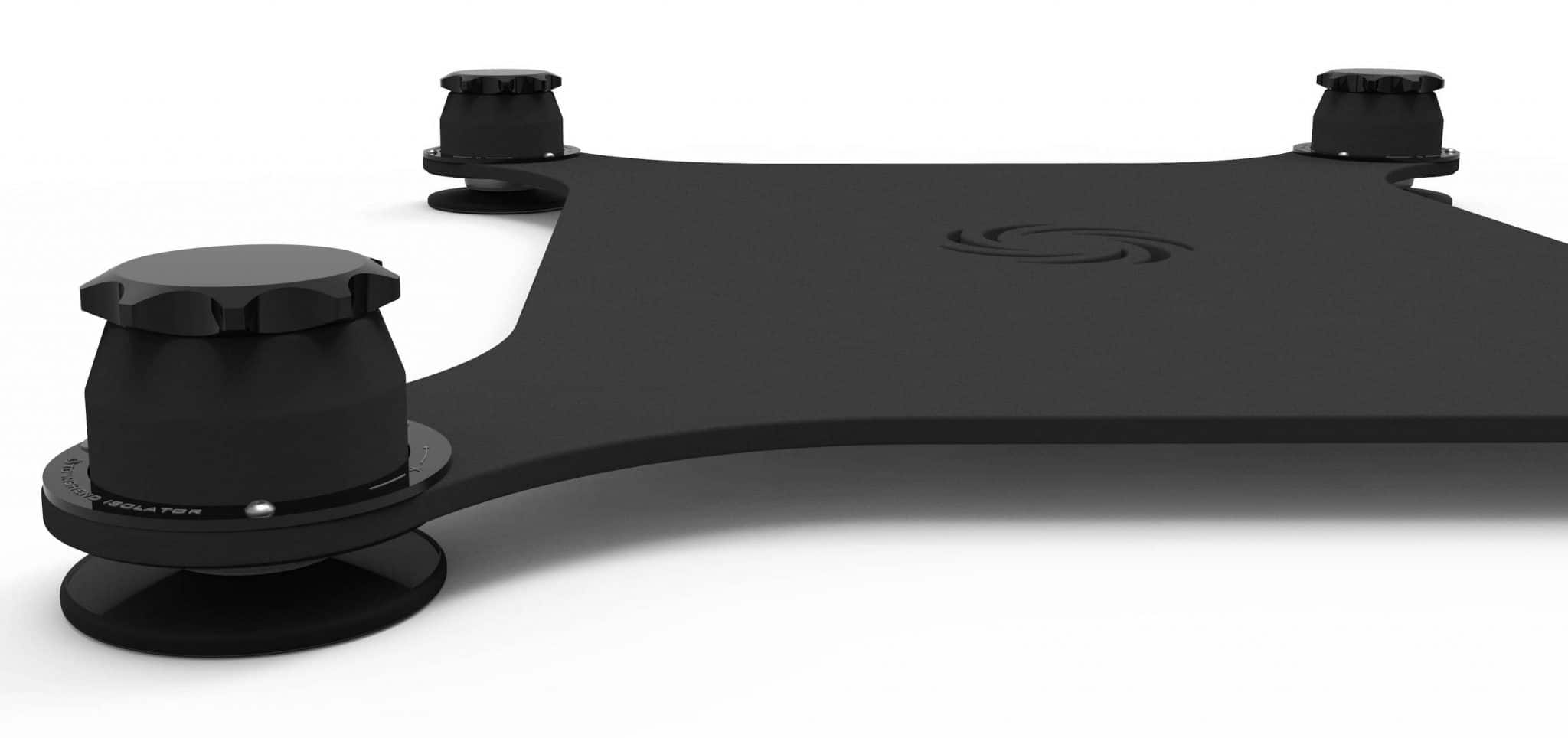
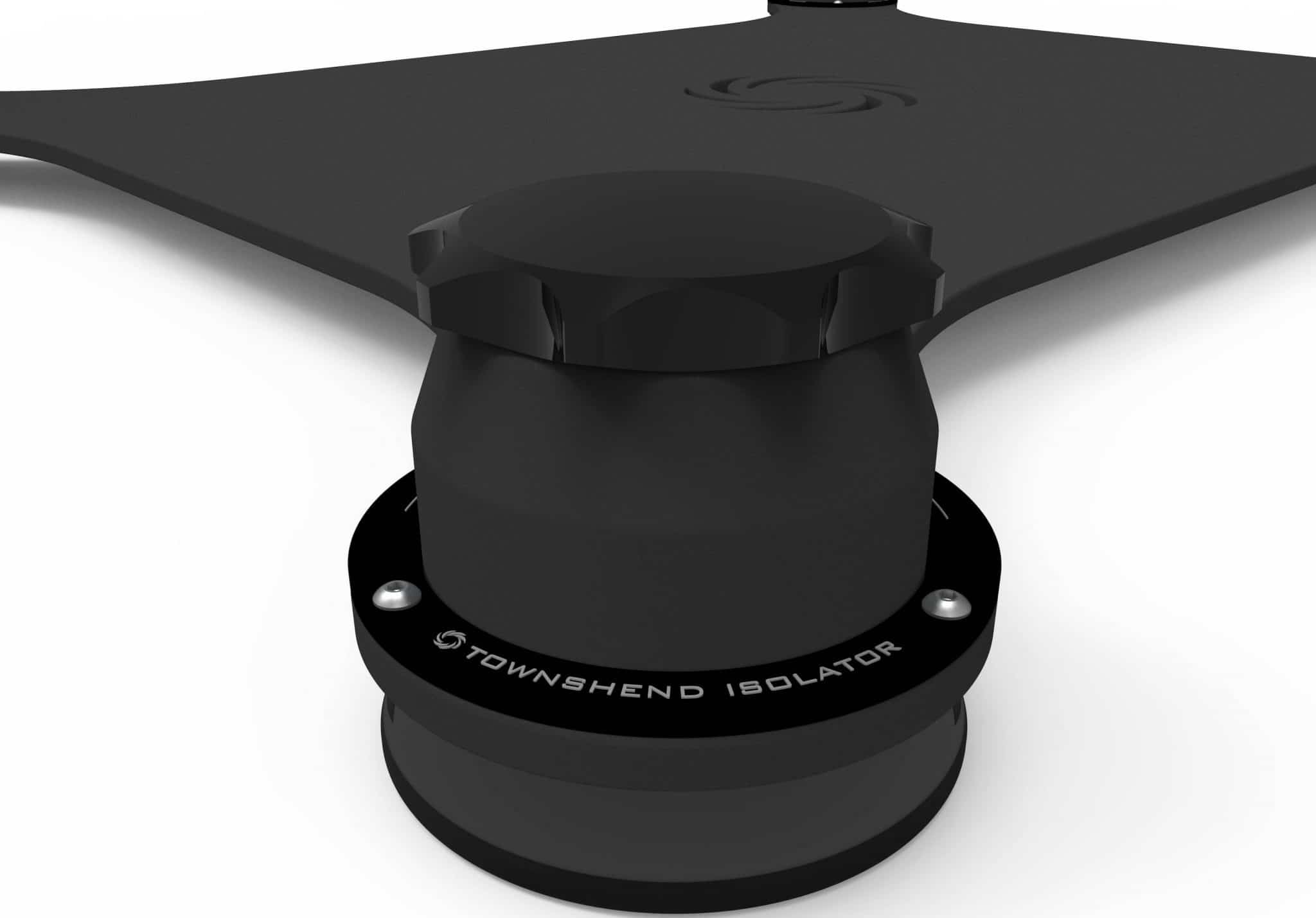
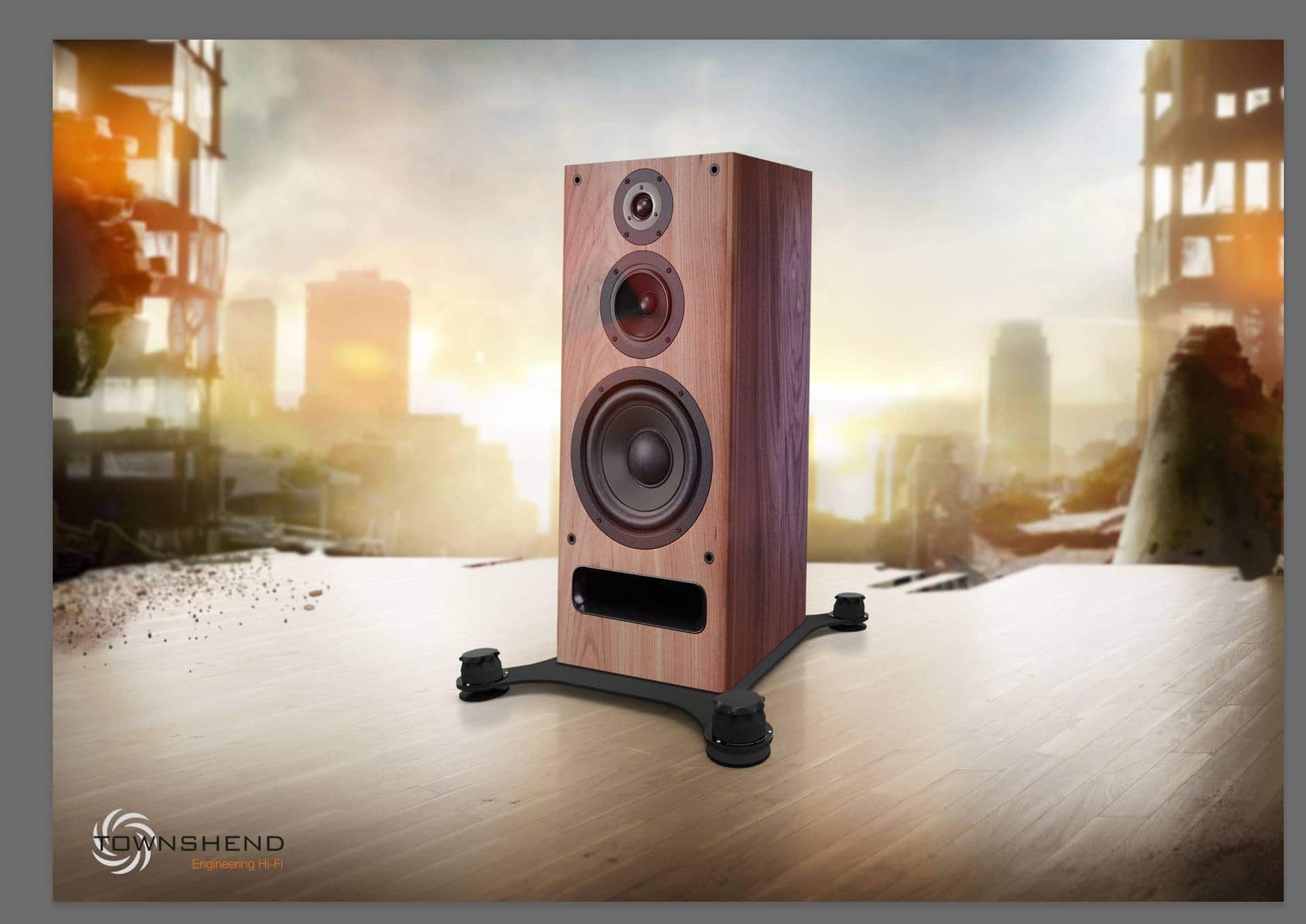
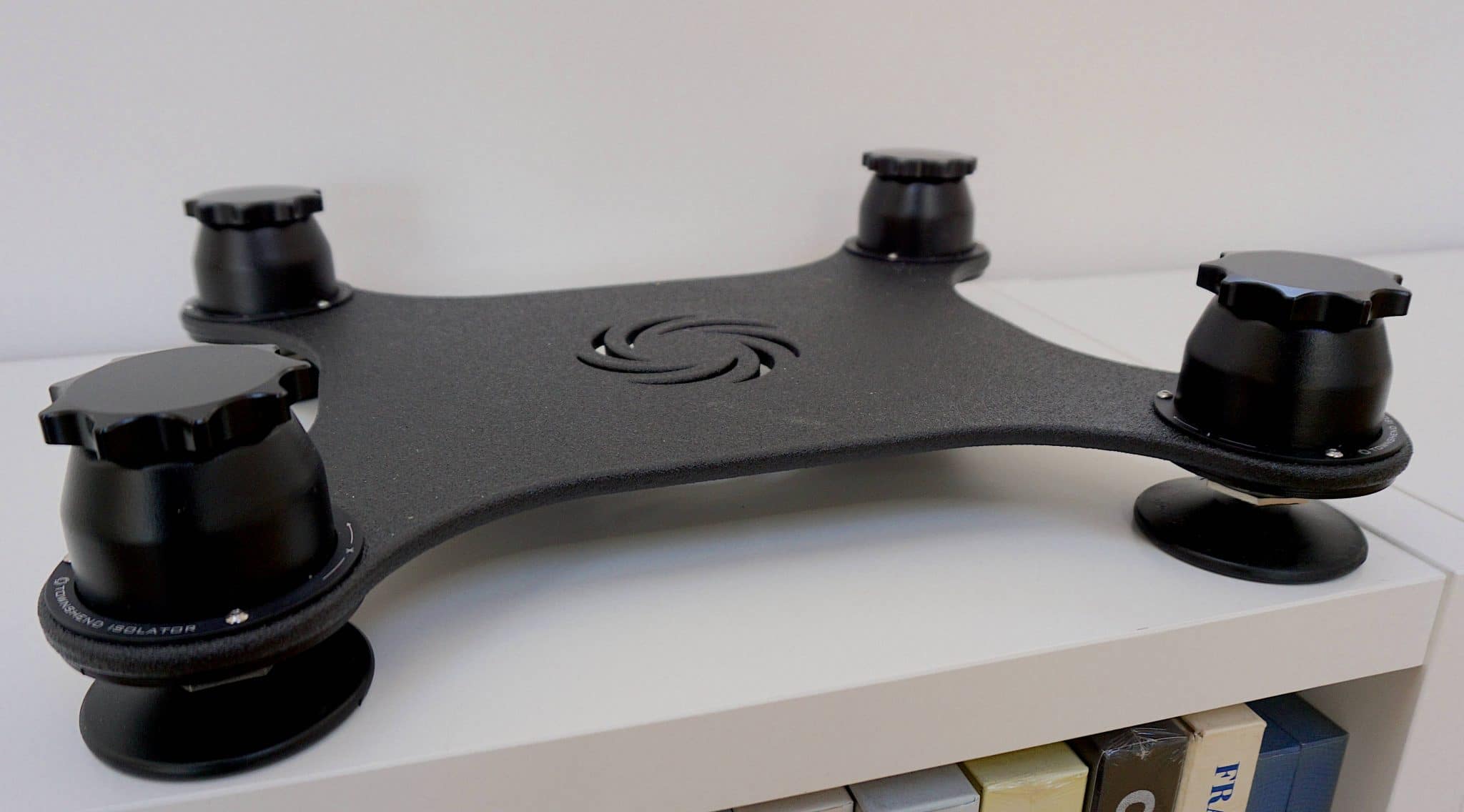

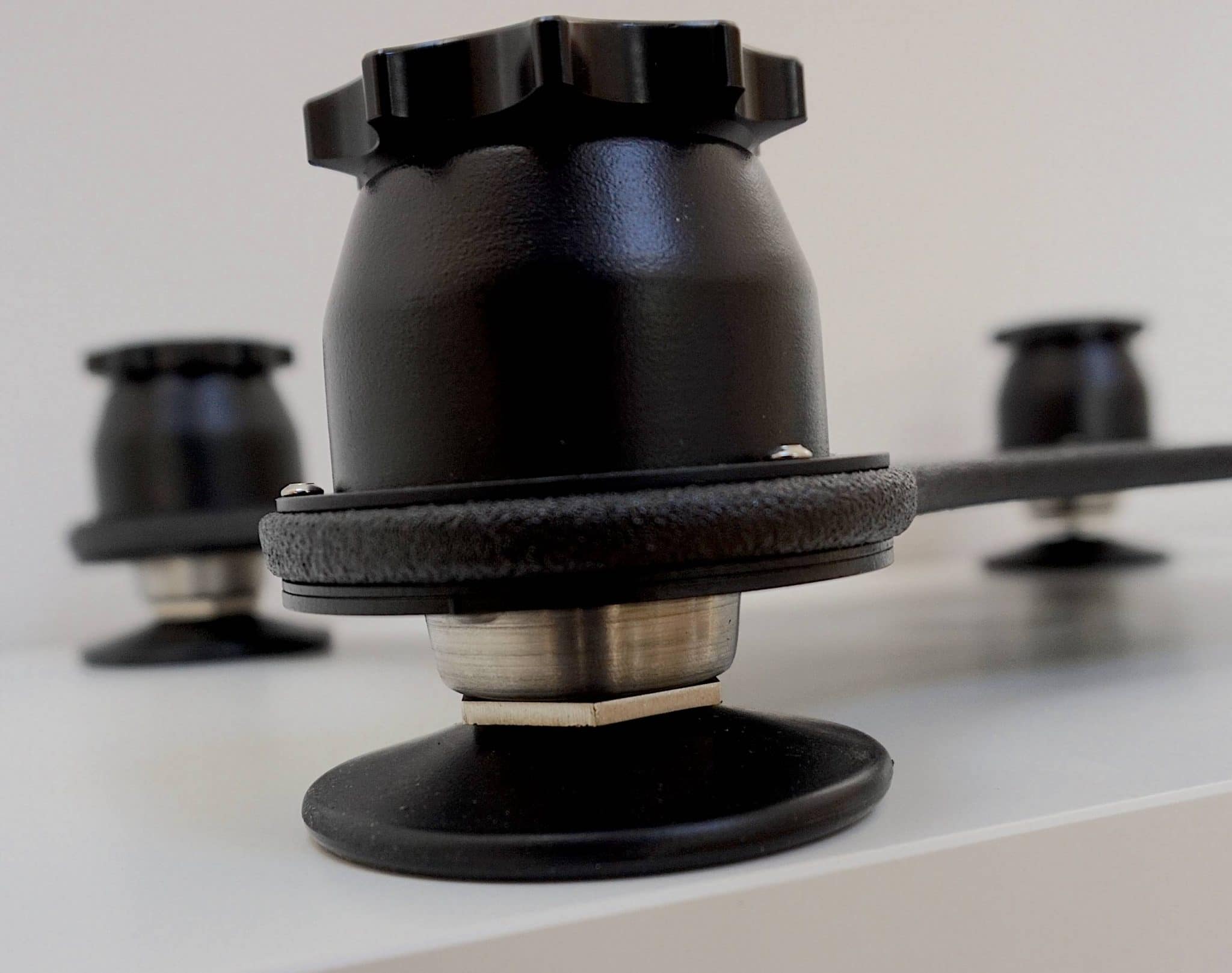
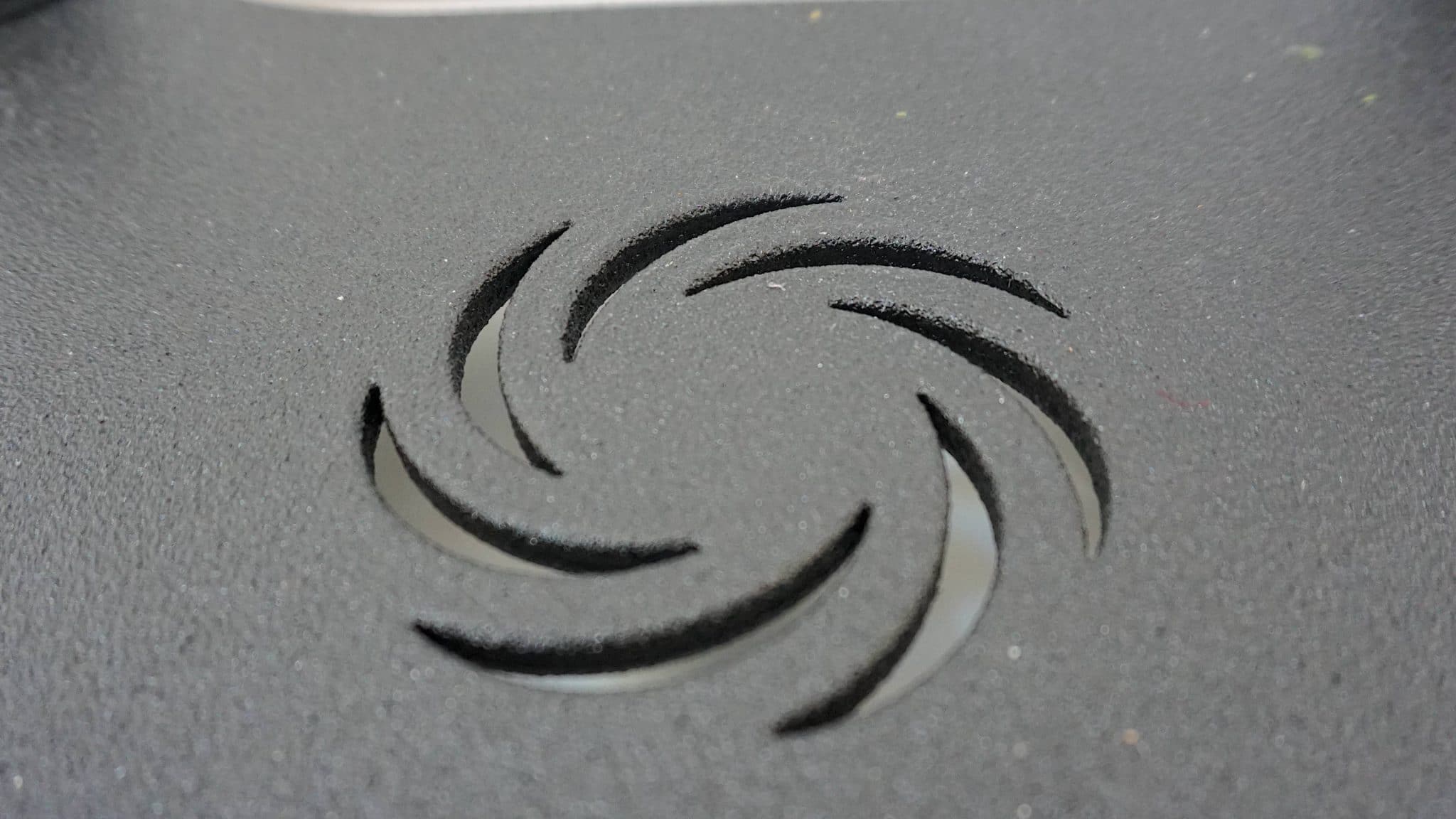
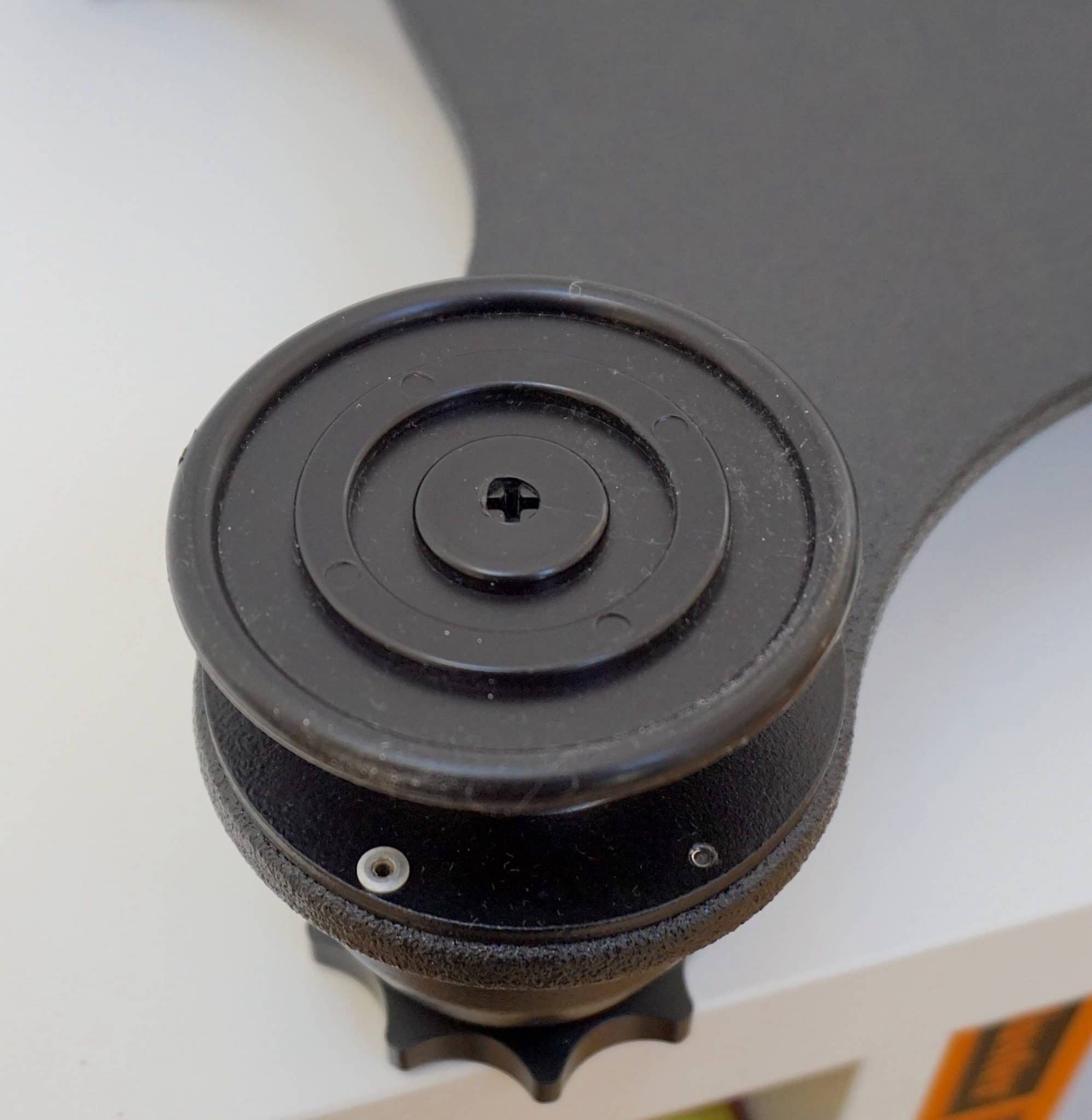
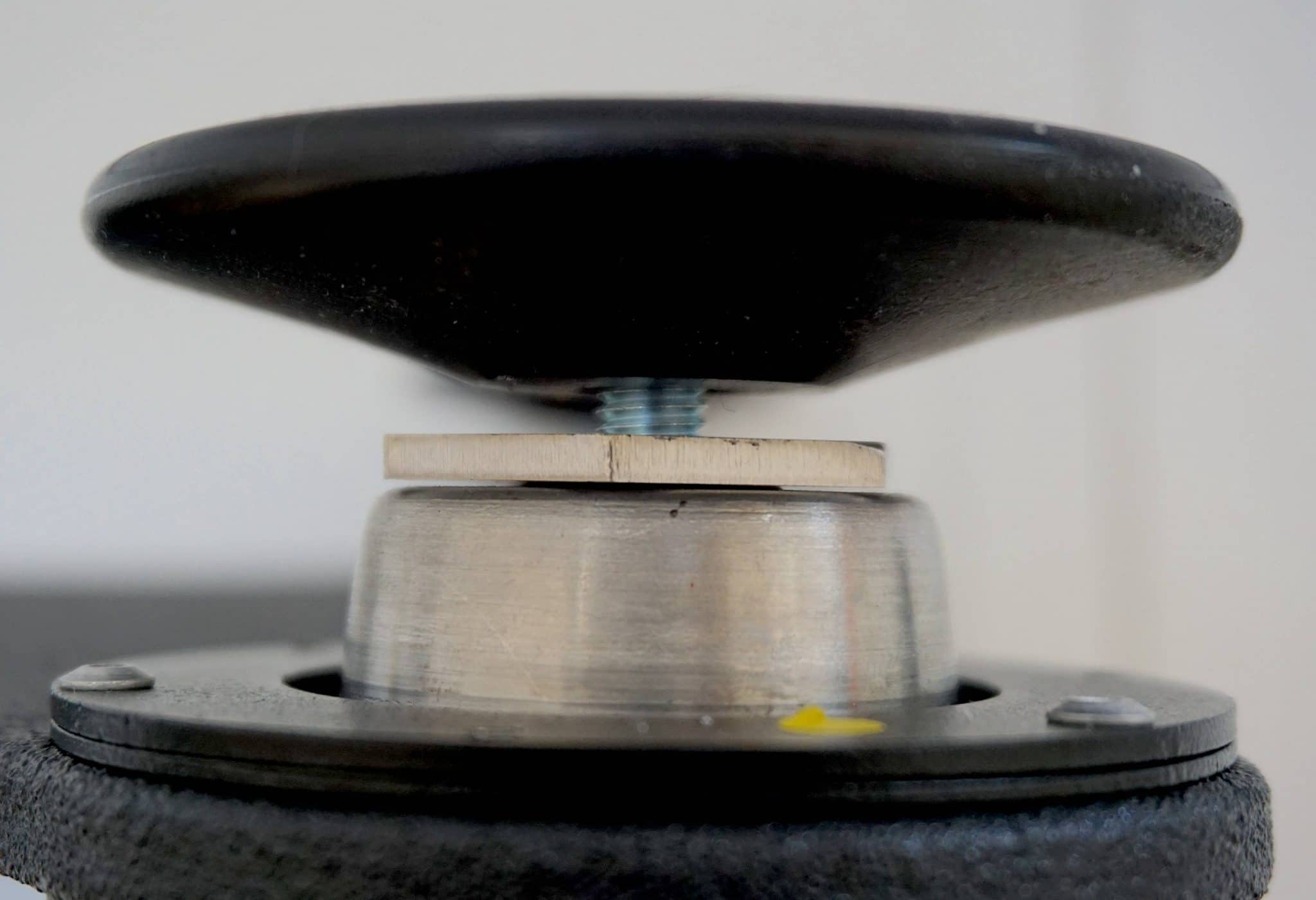
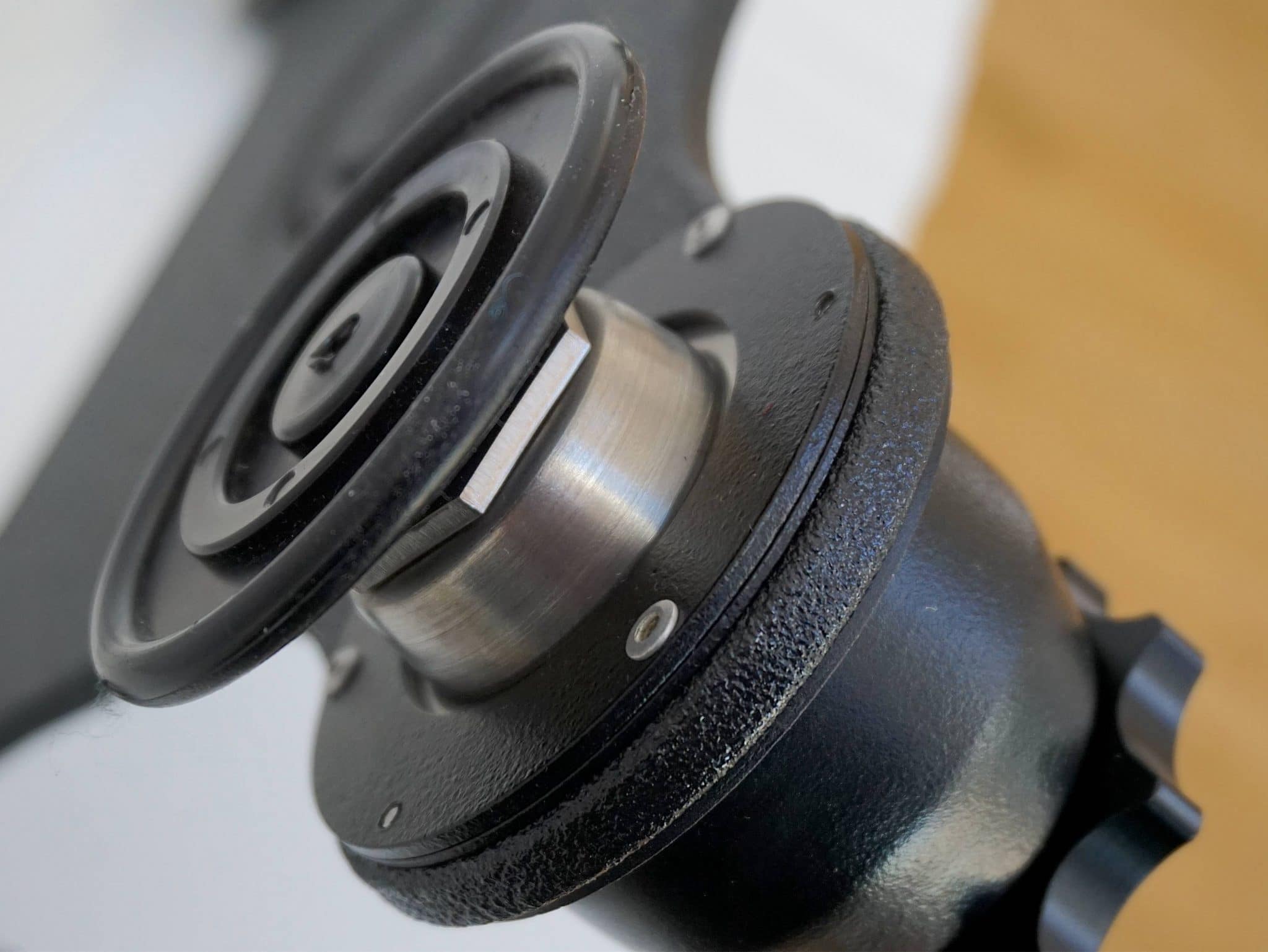
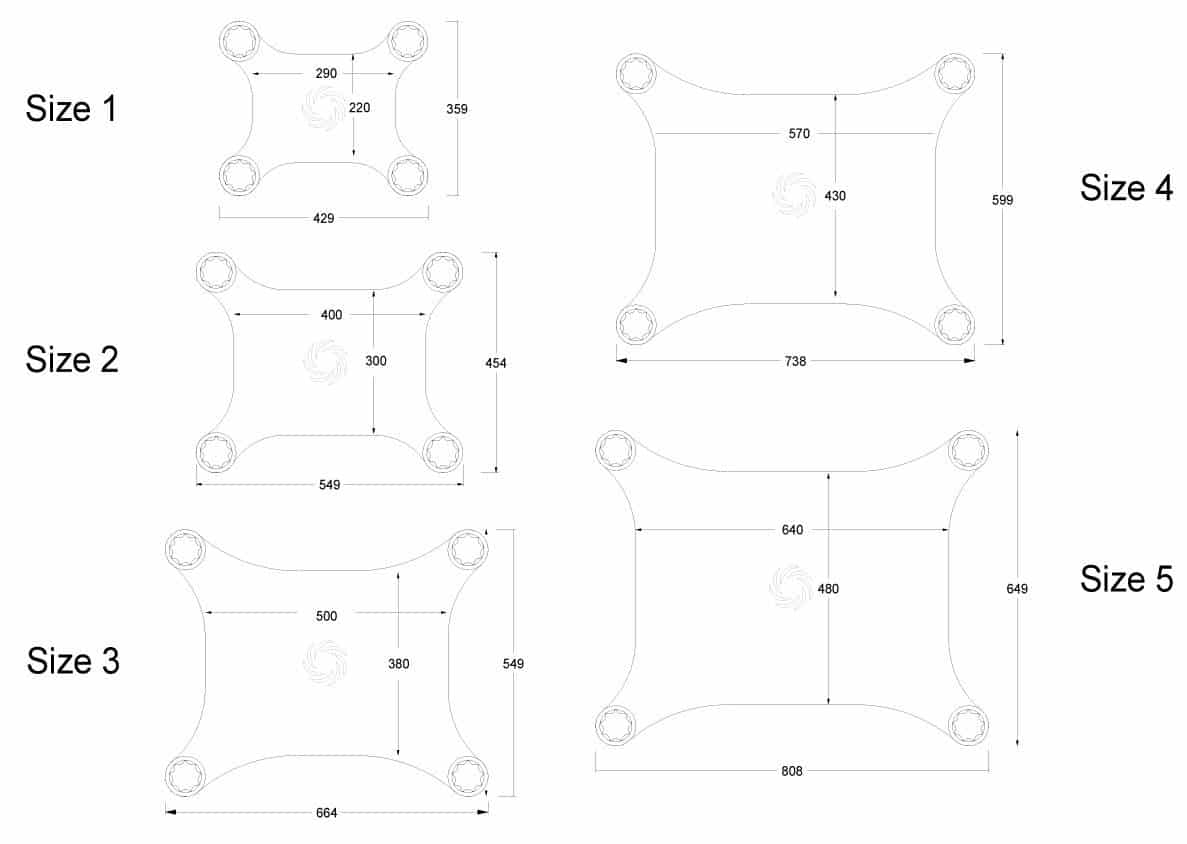
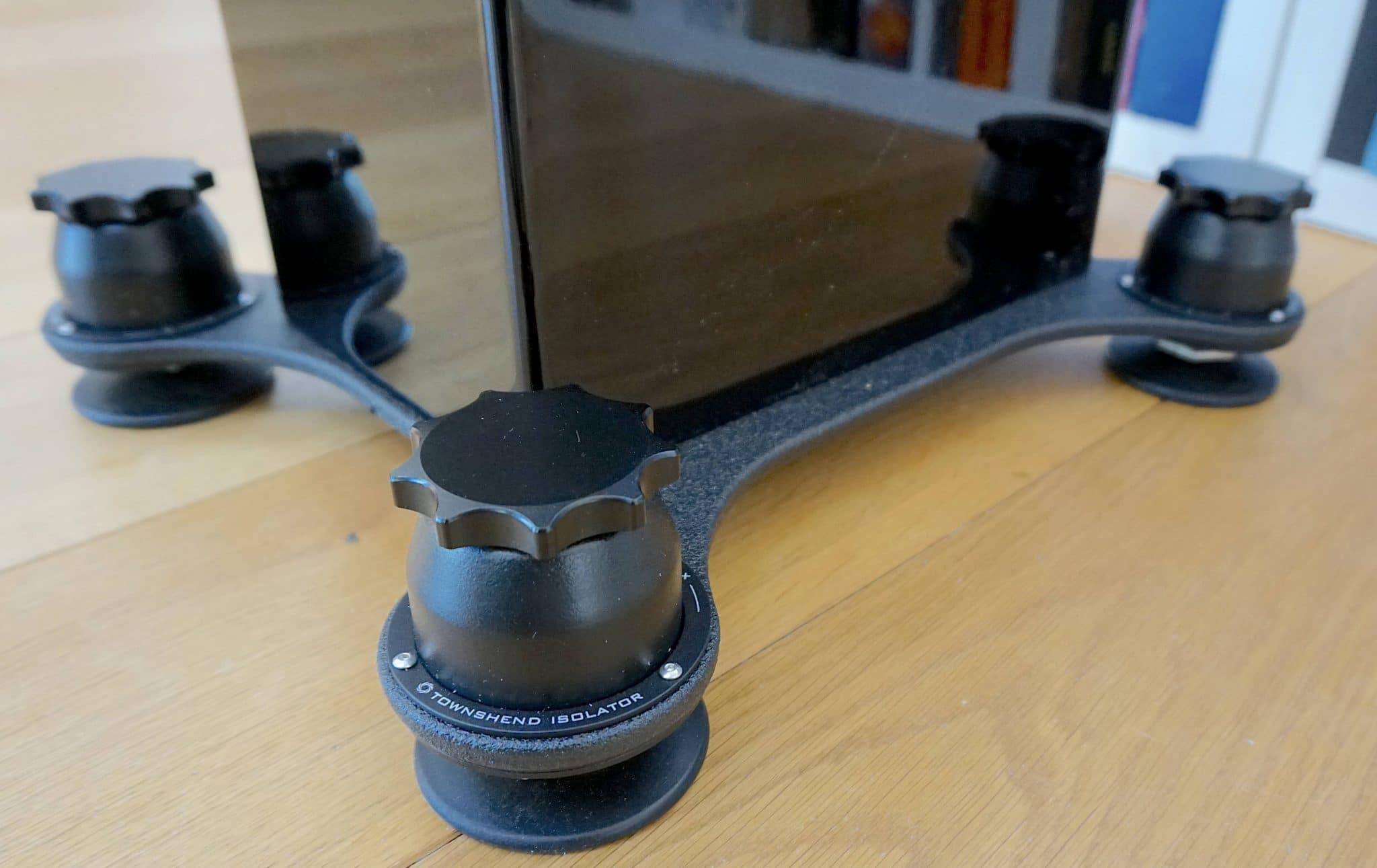
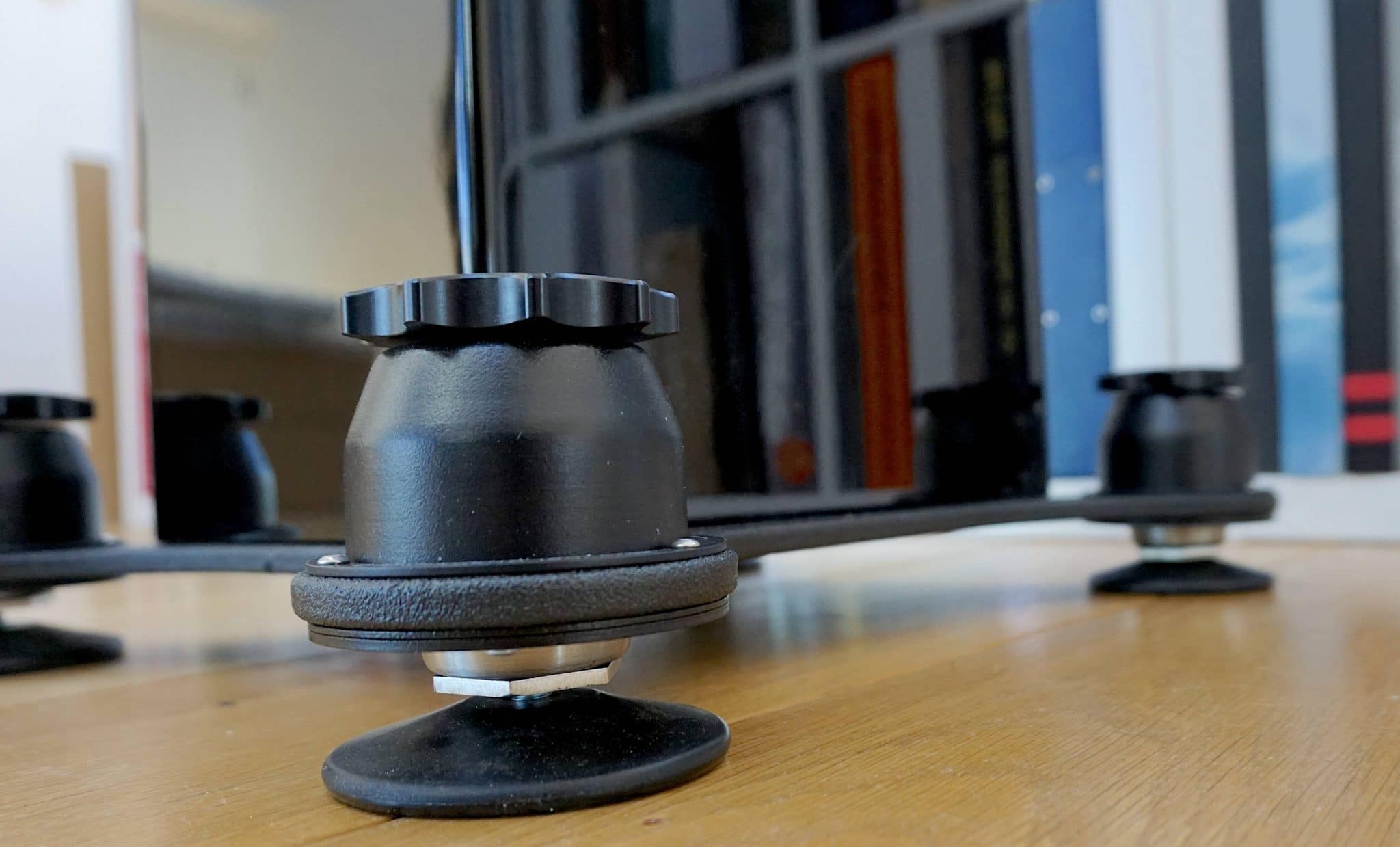
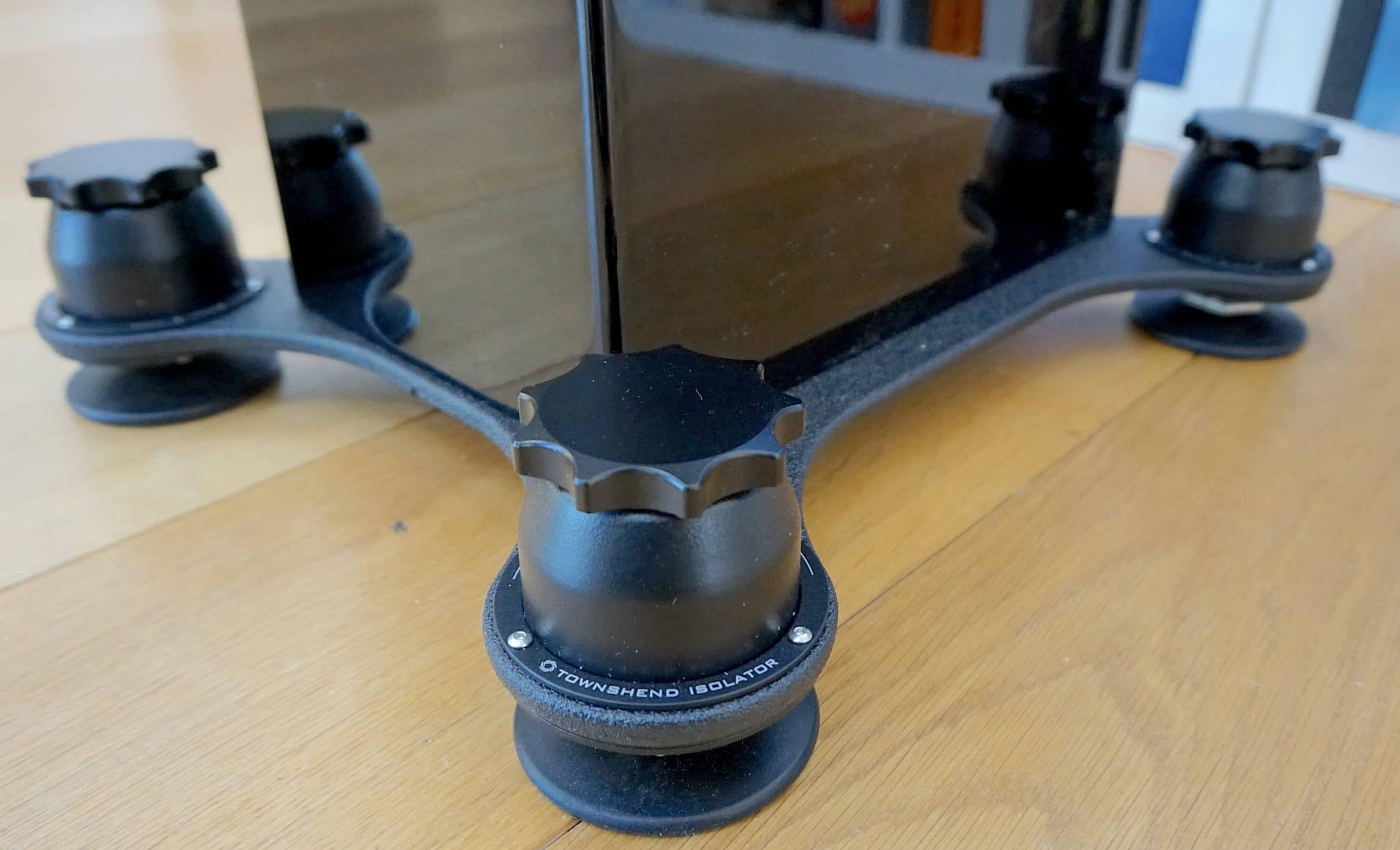



Hi,
Interesting and also having seen your YouTube review as well. One thing that occurs to me is the reflex port, some of which (as mine are) are downward firing. Would this not disturb things, the vent being sited directly against the baseplate?. Interested to know if this solution is good for all speaker designs.
That’s a good question, Rob – I’ll ask Townshend on Monday about that one.
Hi Rob – well, that was quick, here’s what Townshend said, “It this instance please recommend he keep the speakers original feet attached and sit everything on top of the Podium, we have many customers using Podiums with downward firing drivers and ports. With a downward firing bass drivers Max usually recommends Podiums rather than our Seismic Bars but I successfully use the Bars under my ML Summits on the original feet until my Podiums arrived, the results transformed my system in all the areas you mentioned in your review.”
Thank you Paul for following this up and yes a very quick turnaround from Townsend. I’m presuming the corner “points” restrict the speaker so there is no chance of it sliding on the base plate with spikes or feet in place.
Interesting review Paul, but no surprise here what would be even better would be a side by side comparison with the Stillpoints system. In my case my dealer tested both with my Kef Blades 2 and found the latter better! Hmm wonder if it’s a case of horses for courses ; only a side by side comparison with identical speakers would be difinitive!
I think the Stillpoints are actually cheaper.